Is there light at the end of the tunnel? Wairere two tooth sire rams January 2024
When you’re at the bottom it’s hard to see the top. We are all enduring a squeeze of low product prices, spiralling costs and tripling interest rates. And a large area of the country is still in drought mode as the frost season gets underway. All of us will be juggling the new relativity of income versus cost. How do we at Wairere see the future? What rams can we breed to make your sheep farming easier and more profitable?
We see sheep farmers diverging into two paths… sheep with wool and sheep with no wool.
Are there any MAJOR upsides on the horizon?
Lowest hanging fruit?
“Wool is the lowest hanging fruit for New Zealand’s sheep industry. It is also the lowest hanging fruit for the New Zealand economy”. I made this comment at Parliament on March 25th, to Minister of Agriculture, Todd McLay. It was at the end of an all day meeting called by Associate Minister of Agriculture, Mark Patterson, where seven wool groups presented their achievements. Tom Hooper of Wool Source, WRONZ’s commercialisation vehicle, spoke about a recent technological breakthrough which enables wool to be deconstructed to a tiny particle size that is applicable to the very large global pigments market. The Wool Source pigment potentially opens up new demand profile for wool which doesn’t exist today.
Imagine the $400 million wool export industry being transformed by new high value sectors taking large volumes of wool?
An investment proposal for a mid sized wool deconstruction plant is currently being considered by WRONZ, but…
Reality check
Tom Hooper: “This will take time. To fund, design, equip and operationalise a first of its kind facility is a major exercise with a lot of moving parts. While growers desperately need it as soon as possible, we also want it to work! There is a lot of scepticism about investing in wool, given the recent history of farmer investment. What’s different this time is that wool will not be competing in the textile sector against synthetics. And the value add is potentially much greater, in a wide range of applications from personal care and cosmetics to ink, coating and printing. The WRONZ mandate is to maximise the returns of New Zealand wool growers. Access to the IP and technology is conditional on customers using NZ strong wool”.
I stated at the meeting that $4/kg at the farm gate isn’t enough now to keep farmers in wool. We need at least $10/kg greasy average to stay with wool and we need to see initiatives which can deliver this soon.
WHAT ABOUT NUDIES?
At the end of February, Wairere’s second sale of Nudie ram lambs went even better than the sale in 2023, despite the doom and gloom around sheep meat prices. Why? Because most of the buying power came from those who bought Nudies the year before.
1. Buyers were impressed with how many ewes those ram lambs covered, with barren rates down to 0% (2 ram lambs with 200 ewes).
2. Farmers were impressed with better survival rate at birth. Nudies have a thicker skin than Romneys, so says Hayden Woolley in the UK, who has been farming 3,000 Nudie ewes and 3,000 Romney ewes.
3. Growth rate to weaning was superior, “like terminal sired lambs” was one comment. That will be partially thanks to hybrid vigour, but never look a gift horse in the mouth.
4. In a comparison of ram lambs we measured Streakers (half Nudie) against Romneys from weaning in December to slaughter from January to March.
| Kill | Count | WWT | LWT | ADG | CWT | DO% | IMF | GRmm |
| Romney | 129 | 31.8 | 46.6 | 209 | 19.9 | 43% | 1.86 | 7.07 |
| Streaker | 437 | 30.9 | 47.9 | 236 | 20.8 | 43% | 2.15 | 7.85 |
Streakers were killed five days earlier on average, so that would add 0.5kg CW to average 21.3kg CW.
5. Those farmers finishing lambs through the very wet winter of 2023, belly crutching thousands of muddy lambs, could see a big advantage in Nudies or part Nudies.
To quote Royden and Liam Cooper, fellow members of the Alfredton Farm Discussion Group: “We took a big plunge last year, buying five pure Nudies and eight Streakers. Perhaps they had something to do with a record lambing of 160%? They must have helped. In late January we mustered 1,100 works lambs to dag, and were delighted that there were only 30 or 40 needing a handpiece. We will mate all the A flock to purebred Nudies this year, and most of the B flock to
Streakers”.
6. This year the Wairere team has implanted 620 Nudie embryos from the UK, and inseminated 900 Romney ewes with semen from Ireland, Scotland and England. By 2026 the Wairere Nudie flock will number around 600 purebred ewes and hoggets, and 2,000 part Nudies ranging from 7/8 to 3/4(Brazilians) to 1/2(Streakers). Farming sheep like miniature cattle is a major reduction in workload and costs, and perhaps capital too? Can you free up a shepherd’s house for sale or rent? Will a move to Nudies give you more family time? One client told me that the sale of a second finishing property, and reducing his workload to the home breeding farm, now allows him to go to all his kids’ sports matches. “From talking to parents on the sidelines I learn more about what’s going on in the wider business world, and where to invest some capital beyond the farm gate. I used to be too busy, with two farms and a scanning run too.”
Which way will you go, wool or no wool?
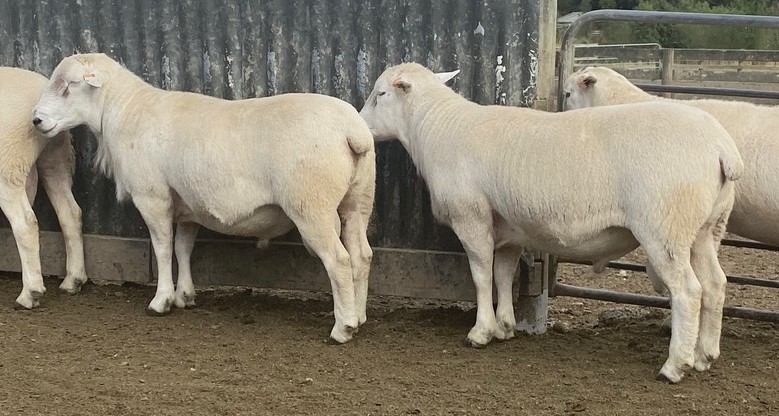
Nudie two tooth rams
What about sheep meat?
How is it that UK farmers are getting over $NZ400 for heavy cull ewes in early May? And the farm gate price for lamb in the UK is $NZ20.84/kg for new season’s lamb? (May 8 is equivalent to November 8 in New Zealand). This second week in May local lamb half legs are selling at £33 each, frozen NZ and Australian half legs at £10. “Buy local” is resonating strongly with British consumers. The UK used to be NZ’s biggest lamb market until China became number one in 2015.
There are shipping problems. The extra time taken to ship around South Africa rather than the Suez Canal leaves chilled lamb to Europe with only eight days shelf life. Several British supermarket chains are playing patriotic, buying “local only” is their claim. But the high price in the UK supports a high price in the EU, which should help our schedule in New Zealand.
In the recent past any meat processing plant which didn’t have a China licence was missing out on around $40 per lamb. The China premium for flaps, forequarters and pizzles, etc, has dropped around 35% on the five year average. China has met the economic slowdown head on, claiming inflation of minus one percent. There is little social welfare available, so consumers tighten their belts when recession looms. When will the Chinese market bounce back? That is hard to predict. Pig meat production there has reverted to pre African Swine Fever levels, and twenty five more Brazilian beef processing plants were recently approved for export to China.
Price is set by supply and demand. A five percent decrease in supply of lamb in the UK was enough to cause a big increase in price at the farm gate. In March 2024 the supply of frozen meat(beef, chicken, pig meat, turkey) in the USA was the lowest since 2010, and the beef herd is the lowest number in seventy years. NZ processors had a poor year financially last year. They will be trying to catch up on those losses. There is still a significant buffer, over $2 per kg, between the five year average processor margin on beef and the farm gate schedule, but only a few cents on lamb.
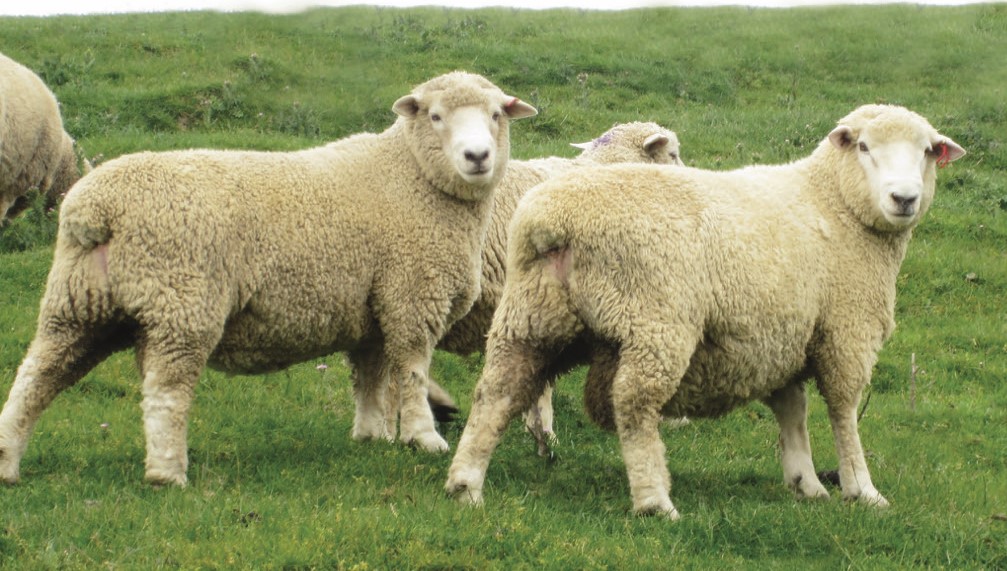
Wairere rams, making your sheep farming easier and more profitable
Meat premiums?
After thirty three years invested in Atkins Sheep Ranch, I can vouch that it is not easy to command a premium and maintain that as the competition copies your moves. ASR took 25 years to achieve “overnight success”, but that investment is now reaping strong dividends.
- What percentage of consumers are prepared to pay extra for various meat attributes?
- What is the extra cost of feed crops required to improve intramuscular fat and succulence?
- Wether and ewe lambs have more fat, but don’t grow as fast as ram lambs, so that’s a cost.
- Can chilled packaging achieve tenderness and succulence to the same level?
- Do niche markets allow big lamb drafts? The discipline of committed, year round supply comes at a cost.
The New Zealand economy
To quote Margaret Thatcher, “Socialism is a great idea, until you run out of other people’s money”. We’ve run out of money.
International trade
NZ’s chief trade negotiator Vangelis Vitalis reveals a difficult future for New Zealand as most countries become more protectionist. “The golden period for New Zealand exporters was 1995-2017, when we could take unfair trading practices to the International Trade Court. Under Trump the USA refused to appoint new judges to the Court. From a dwindling total of fewer than 1,000 trade barriers in 2017, 3,207 new tariff and non tariff barriers have been erected since then. I was also told by negotiators from other countries that “New Zealand’s water quality is in the bottom half of the OECD”. Who spreads these lies? Climate change and the environment are used as negotiating chips by other countries.
Are ruminants ruining the world?
Where have we got to with the debate around methane?
By my calculations New Zealand pastures sequester 30-40 million tonnes of CO2 annually. New Zealand cattle emit around 800,000 tonnes of methane per year, sheep around 310,000 tonnes, farmed deer around 20,000 tonnes, a total of 1.3 million tonnes of methane.
So our pastures absorb around 23-30 tonnes of CO2 per tonne of methane emitted by farmed animals. The system is effectively neutral.
But in the 1990s the NZ government seized upon the concept that planting trees and reducing livestock numbers would satisfy our international obligations re GHGs. A spike in global timber prices prompted 100,000 hectares per year of tree planting in New Zealand from 1993-98, then came to a grinding halt. Since then single entry accounting and brainwashing of the public has convinced most people in New Zealand that farming ruminants is evil.
Carbon farming?
In March I had the opportunity to talk one on one to Rod Carr, chair of the Climate Change Commission. He said, “New Zealand now has 2 million hectares of plantation trees(that’s an increase of around 300,000ha over the past five years). Another 300,000ha would enable NZ to meet its international GHG reduction obligations. But the value of carbon in five to ten years time is a big question mark? The supply of carbon offsets will be substantially higher, and demand will be lower. How will that translate into the price of a tonne of carbon?”
Stormy Daniells
“When is succession going to happen at Wairere?” is a question I get asked. Now is not the time. The sheep industry is in crisis mode, and I want to see it back on a high again. Wairere is reinvesting in the sheep industry every year, inside the farm gate and beyond. I intend to take up a significant shareholding in the wool deconstruction business when that opportunity becomes available. I’ve been watching the R and D in that sector for seven years. Progress has been frustratingly slow, but it will soon become a game changer. Between 2010 and 2020 Wairere invested $400,000 in wool beyond the farm gate. And is prepared to invest a further million dollars plus to accelerate wool deconstruction.
There are ongoing challenges in hill country farming. Wairere is up for those challenges. We have a strong team hunting out the best options for you.
Why buy Wairere?You will scrutinise every item of expenditure this year. Why buy Wairere rams? There are reasons why Wairere rams have been the most popular choice of NZ sheep farmers for more than thirty five years: they make your sheep farming easier and more profitable. |
The Wairere premium
- If you sell say 100,000kg of weaned store lambs and get a ten cent premium for the Wairere name, that’s $10,000…probably enough to buy your Wairere rams for the year.
- The Wairere premium extends to the sale of surplus breeding stock, whether that be ewe lambs, two tooths, or cast for age ewes.
- We don’t get carried away about traits that make little difference to your bottom line, but are visible, eg, black spots on parts of the body not growing wool (even in your wool clip, the discount is negligible). We focus on the invisible traits that make you more money, like faster growth to weaning.
- Constitution. Mob stocking of lambs and ewes over many decades on medium to steep Wairarapa hill country has built in adaptability to a high stocking rate, and to shortage of feed in droughts and harsh winters.
- Ewe hoggets have all been mated since 1966, building in early maturity. Most years since 2005, only pregnant ewe hoggets have been retained.
- Hoggets are lambed unshepherded on medium to steep hills, building in easy care.
- Wairere has continued to innovate to provide more choice for you. New options this year are:
- The Wairere composite, 1/4 Nudie 3/8 Texel/Finn/East Friesian 3/8 Romney…bred for minimal dagging, shearing once per year, power packed for growth.
- The EasiDraft terminal, 1/2 Nudie 1/2 Dominator, no shearing required until eight months old.
- Two top Nudie rams have been mated to 200 Wiltshire ewes in February, a flock farmed in a hot FE area in the Waikato. We intend to offer the ram lambs from that cross in January 2025, in Te Kuiti or Taupo.
- We take pride in maintaining a close liaison with clients. With Andrew Herriott in Otago, Pierre Syben in the Wairarapa, and Warren Jones in Northland, we have New Zealand covered. Please contact us at any time.
- A global network. Pierre Syben has sold rams and farmed for Wairere in Australia and Europe, and is in regular contact with farmers and agents abroad. One of Pierre’s anecdotes: “Two years ago I visited a Wairere client, the biggest sheep farmer in Germany. He loses 20% of lambs to ravens and another 20% to wolves (protected). He worries about invasion by PETA animal welfare extremists. Different country, different problems.”
- Yesterday I was rung by a long term client who was buzzing from selling 260 of his B flock ewes at a premium. “I get phone calls from farmers wanting to buy Wairere bred ewe lambs and ewes. I don’t have to go looking. They come to me. The premiums I get more than pay for my annual purchase of Wairere Romney rams. The Wairere brand really works in my favour”.
- Another recent Wairere client in Northland: “My first cross Wairere Romney ewe hoggets weighed 51kg to the ram in mid April. Last year my Romney ewe hoggets with another ram breeder’s genetics weighed only 40kg off the same crop. I can’t believe the difference”.
When you’re at the top it’s hard to see the bottom. But here we are. Wairere’s mission is to take you back to the top. |
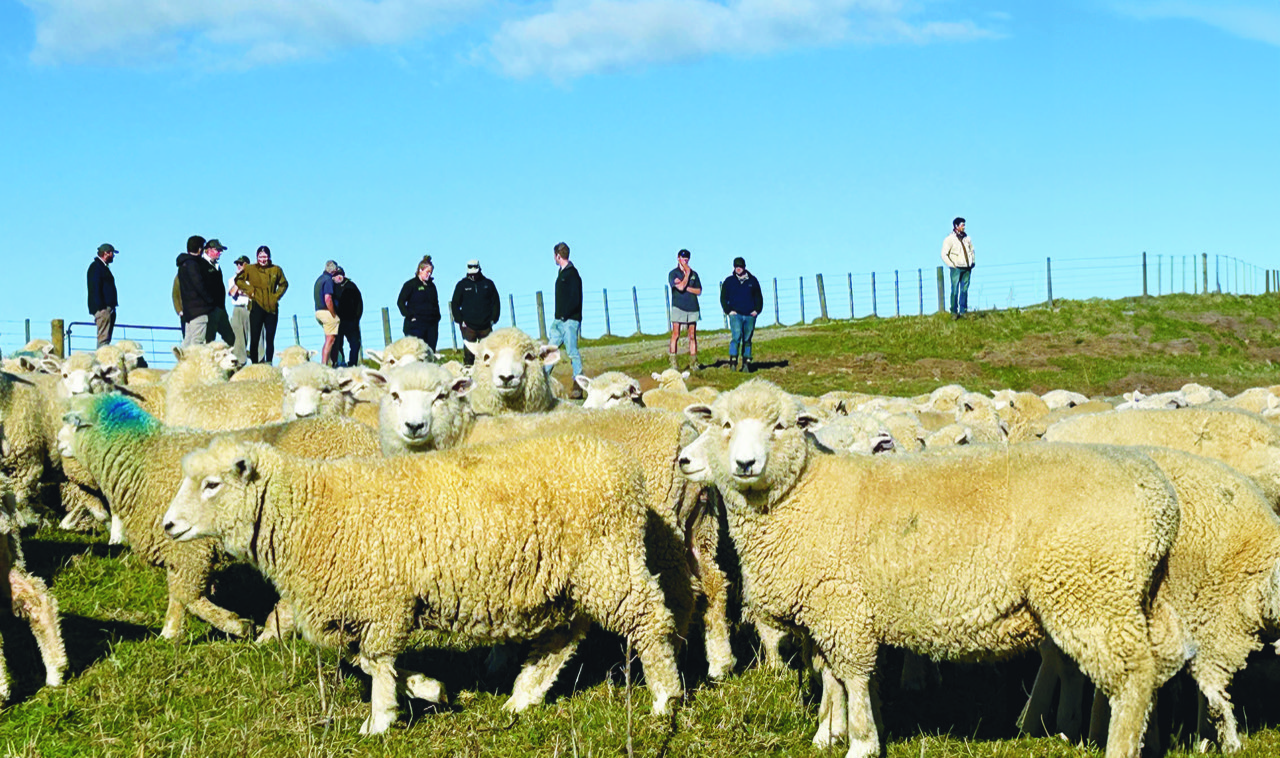
An Otago discussion group inspecting Wairere ewe hoggets. Wairere measured just 130mm for the five months December – April, (246mm for seven months) and it’s still dry. Good fertiliser history makes a huge difference in a drought.
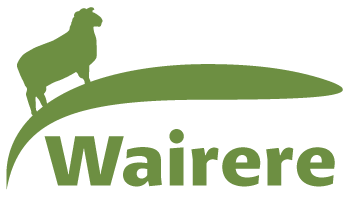
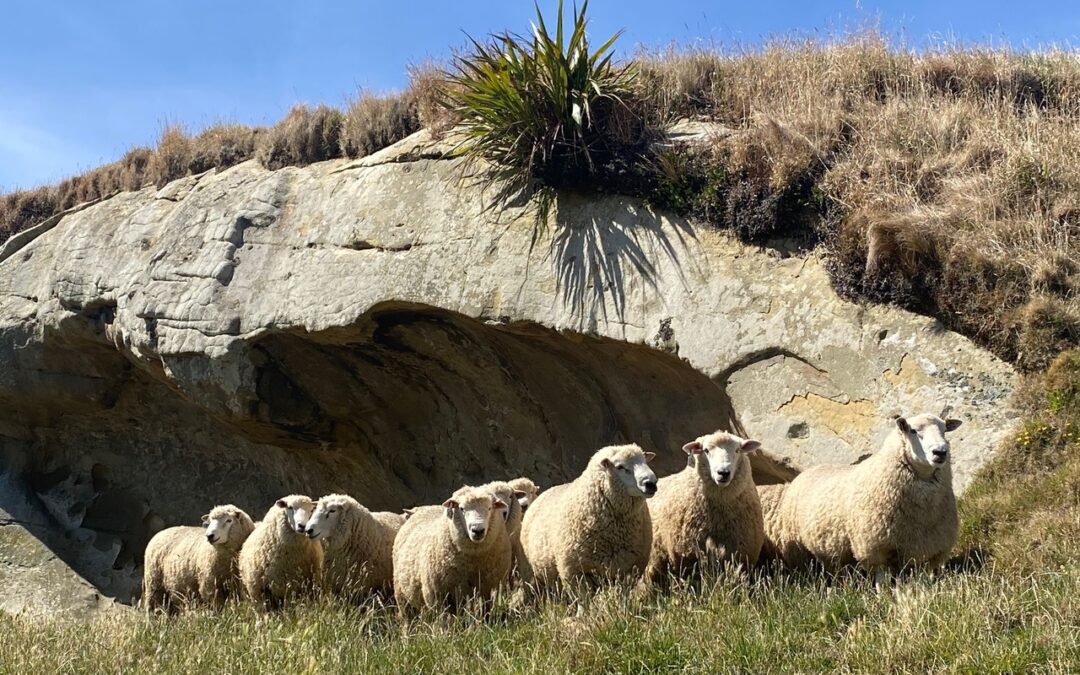
Recent Comments